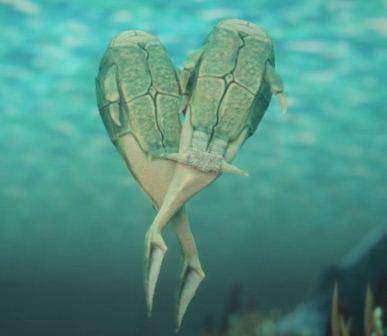Origins of SEXUAL INTERCOURSE fished out of SCOTTISH LAKE
Fossil find proves it first happened 385 million years ago

Primitive, lake-dwelling armoured fish "invented" internal fertilisation and copulation 385 million years ago in Scotland, a top palaeontologist has found.
According to Professor John Long at Flinders University in Australia, the discovery is big news for the evolutionary history of sexual reproduction.
Male fossils expertly dubbed Microbrachius (meaning arms) dicki that are, er, members of the antiarch group of placoderms apparently developed bony L-shaped genital limbs called claspers to transfer sperm to females, according to Long's research, which was published in the Nature science journal today.
Meanwhile, the paper explained, the female of the species developed small paired bones to lock the male organs in place for mating.
The ancient fish, which measured just 8cm long, were also found to inhabit Estonia and China.
Long made the discovery in 2013, after examining a single fossil bone stored at the University of Technology's collections in Tallinn, Estonia.
The professor said:
Microbrachius means little arms but scientists have been baffled for centuries by what these bony paired arms were actually there for. We’ve solved this great mystery because they were there for mating, so that the male could position his claspers into the female genital area.
It was previously thought that reproduction spawned externally in water, and much later down the track in the history of vertebrate evolution.
Our earlier discoveries published in Nature in 2008 and 2009 of live birth and copulation in placoderms concerned more advanced placoderm groups. Our new discovery now pushes the origin of copulation back even further down the evolutionary ladder, to the most basal of all jawed animals.
Basically it’s the first branch off the evolutionary tree where these reproductive strategies started.
Long added that it was likely that the fishes had sex in a sideways position by locking their bony jointed arms together.
"With their arms interlocked, these fish looked more like they are square dancing the do-si-do rather than mating," the prof said.

Ancient sexual intercourse was a sideways do-si-do. Image credit: Flinders University
The discovery also signalled the first time that males and females displayed distinctly different physical appearances, added post-doctoral research fellow Dr Brian Choo, who co-authored the paper. He said:
This is the first time in vertebrate evolution that males and females developed separate reproductive structures, with males developing claspers, and females developing fixed plates to lock the claspers in for mating.
The latest discovery follows a paper published by Long and other researchers at Flinders University in June this year, when the boffins suggested that some of the earliest male genital organs known to palaeontology started out as a kind of “legs”, referred to by the scientists as the aforementioned claspers.
Who knew sex started out so gangly? ®








 User Center
User Center My Training Class
My Training Class Feedback
Feedback











